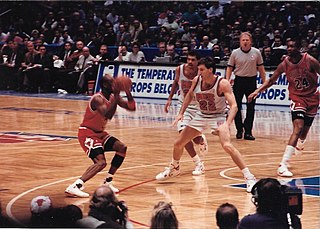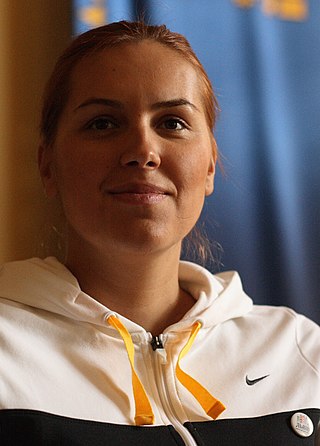
Sports in Japan are a significant part of Japanese culture. Both traditional sports such as sumo and martial arts, and Western imports like baseball, association football, basketball and tennis are popular with both participants and spectators.

Sports in Puerto Rico can be traced from the ceremonial competitions amongst the pre-Columbian Native Americans of the Arawak (Taíno) tribes who inhabited the island to the modern era in which sports activities consist of an organized physical activity or skill carried out with a recreational purpose for competition. One of the sports which the Taíno's played was a ball game called "Batey". The "Batey" was played in U-shaped fields two teams; however, unlike the ball games of the modern era, the winners were treated like heroes and the losers were sacrificed.

Sports in Brazil are those that are widely practiced and popular in the country, as well as others which originated there or have some cultural significance. Brazilians are heavily involved in sports. Football is the most popular sport in Brazil. Other than football, sports like volleyball, mixed martial arts, basketball, tennis, and motor sports, especially Formula One, enjoy high levels of popularity.

Sports in the United States are an important part of the nation's culture. Historically, the national sport has been baseball. However, in more recent decades, American football has been the most popular sport in terms of broadcast viewership audience. Basketball has grown into the mainstream American sports scene since the 1980s, with ice hockey and soccer doing the same around the turn of the 21st century.

Many sports in Iran are both traditional and modern. Tehran, for example, was the first city in West Asia to host the Asian Games in 1974, and continues to host and participate in major international sporting events to this day. Freestyle wrestling has been traditionally regarded as Iran's national sport, however today, football is the most popular sport in Iran. Because of economic sanctions, the annual government's budget for sport was about $80 million in 2010 or about $1 per person.

Sports in Ukraine as in any other country throughout the World plays an important role in shaping the popular view of Ukraine and Ukrainian popular culture to its residents and the rest of the World. Sports in Ukraine while it is voluntary and spontaneous, it is regulated and standardized by the government and respected government agency as well as legislation. According to the Law of Ukraine "About physical culture and sports", sports is an activity of subjects of the sphere of physical culture and sport directed to identification and the unified comparison of achievements of people in physical, intellectual, and other preparation by holding sports competitions and preparation for them. The sport has such directions: children's sports, sports for children and young people, reserve sports, elite sports, professional sports, sports of veterans of physical culture and sport, veterans of war, the Olympic sport, not Olympic sport, office and applied and military and applied sport, sports of persons with disability and so forth.
Sports in China consists of a variety of competitive sports. Traditional Chinese culture regards physical fitness as an important characteristic. China has its own national quadrennial multi-sport event similar to the Olympic Games called the National Games.

The Penn State Nittany Lions are the athletic teams of Pennsylvania State University, except for the women's basketball team, known as the Lady Lions. The school colors are navy blue and white. The school mascot is the Nittany Lion. The intercollegiate athletics logo was commissioned in 1983.

Baseball was popularized in Cuba by Nemesio Guillot, who founded the first major baseball club in the country. It became the most played sport in the country in the 1870s, before the period of American intervention.
A wide array of sports are played in Armenia. Popular sports in Armenia include football, basketball, volleyball, and ice hockey. Further, the country sends athletes to the Olympics in boxing, wrestling, weightlifting, judo, gymnastics, track and field, diving, swimming, and shooting. Armenia's mountainous terrain provides great opportunities for the practice of sports like skiing and rock climbing. Being a landlocked country, water sports can only be practiced on lakes, notably Lake Sevan. Competitively, Armenia has been very successful at chess, weightlifting, and wrestling at the international level. Armenia is also an active member of the international sports community, with full membership in the Union of European Football Associations (UEFA), Federation of International Bandy (FIB), International School Sport Federation, International Ice Hockey Federation (IIHF), among others. It also hosts the Pan-Armenian Games.
Sport in Romania is an important part of the country's culture. Romania has risen to prominence in a number of sporting areas in recent decades. Association football is the most popular sport in Romania, a nation of 20 million. The most successful club is Steaua Bucharest, who were the first Eastern European side to win the European Cup and the European Supercup in 1986. Romania is one of only four national teams from Europe that took part in the first World Cup in 1930. The Romania national football team has taken part in seven FIFA World Cups and had its most successful run during the 1990s, when they reached the quarterfinals of the 1994 FIFA World Cup, losing to Sweden in the penalty shootout. Romania was ranked third by FIFA in 1997.

The most popular sport in Russia is soccer. According to Yandex search analysis results rating of the most popular sports among Russians: "Football topped the list of the most popular sports in Russia" with 5 to 10 million requests. Ice hockey came in second with handball, basketball, futsal, boxing, auto racing, volleyball, athletics, tennis, and chess rounding out the top ten rankings. Other popular sports include bandy, biathlon, figure skating, weightlifting, gymnastics, wrestling, martial arts, rugby union, and skiing.

An Asian Championship is a top level international sports competition between Asian athletes or sports teams representing their respective countries or professional sports clubs.
Sports are a central part of the culture of the Dominican Republic, and have been practiced in the whole country since the native inhabitants were living in the island. Sports play a key role in the culture and makeup of Dominican Republic society. Baseball is the most popular sport on the island country and Major League Baseball has been recruiting players from the Dominican Republic since the 1960s. Basketball, Association football, Volleyball, and Boxing are other sports played in the country.

The Sacred Heart Pioneers are the 32 sports teams representing Sacred Heart University in Fairfield, Connecticut in intercollegiate athletics. The Pioneers compete in the NCAA Division I and are members of the Northeast Conference, Atlantic Hockey, Eastern Intercollegiate Wrestling Association, and New England Women's Hockey Alliance.

Bulgaria has established traditions in a great variety of sports.
Sport in Azerbaijan has ancient roots, and even now, both traditional and modern sports are still practiced. Freestyle wrestling has been traditionally regarded as Azerbaijan's national sport, however today, the most popular sports in Azerbaijan are football and chess. Other popular sports are gymnastics, judo, futsal, weightlifting, and boxing. Azerbaijan's mountainous terrain provides great opportunities for the practice of sports like skiing and rock climbing. Water sports are practiced on the Caspian Sea and in inland waters. Competitively, Azerbaijan has been very successful at chess, weightlifting, and wrestling at the international level. Azerbaijan is also an active member of the international sports community, with full membership in the International Federation of Association Football (FIFA), Union of European Football Associations (UEFA), International Association of Athletics Federations (IAAF), European Athletics Association (EAA), International Olympic Committee (IOC), among many others. It has also hosted the first European Games and 2017 Islamic Solidarity Games.
The Gymnasiade, or World Gymnasiade, or World School Sport Games, or ISF World School Sport Games is an international multi-sport event which is organised by the International School Sport Federation (ISF). It is the largest event among many other sport events held by the ISF. Aligned with the philosophy of the organisation, only individuals between the ages of 13 and 18 are eligible to compete.
Sports in Vanuatu are played throughout the country.













